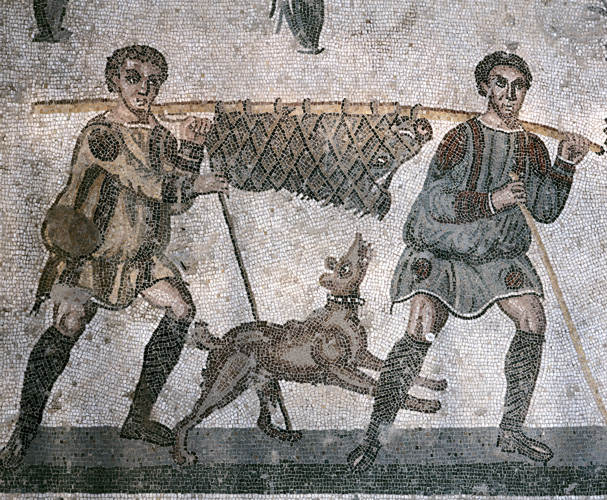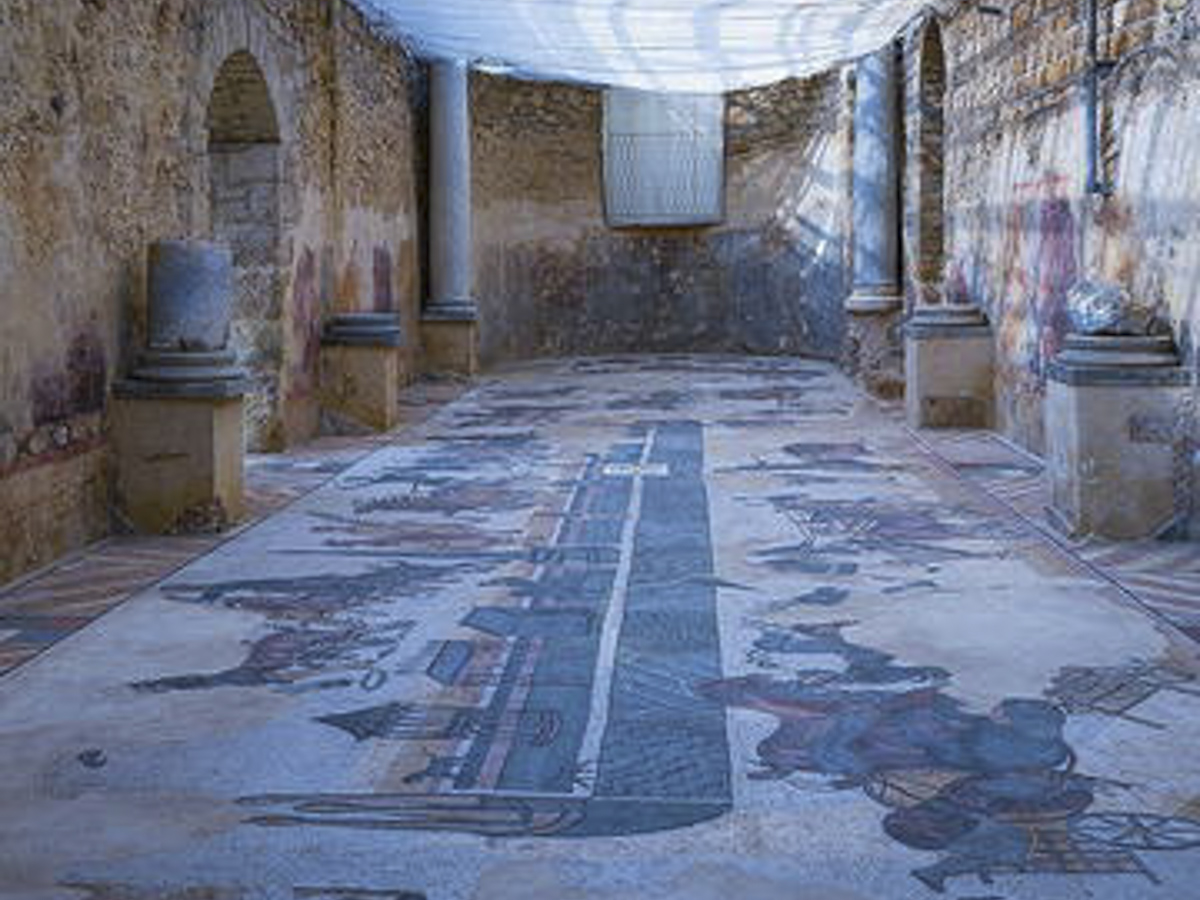Near Piazza Armerina (Sicily) the Villa Romana del Casale was built (on an earlier 2nd century settlement) in the 4th century A.D. Indisputably one of the largest and most luxurious villas anywhere in the Roman world, it is the supreme example of a luxury Roman villa, graphically illustrating the predominant social and economic structure of its age. Its decorative mosaics are exceptional for their artistic quality and invention as well as their extent. Built sometime between 310 and 340 the villa continued to be occupied up to the Arab invasion of the 9th century, though in a state of increasing degradation. With more than 60 rooms, 42 of them paved with colourful mosaics, covering 3500 m2, the villa developed on four levels according to the natural slope of the hill.
The monumental entrance opens into a courtyard, on to which face the elaborate baths. Next, comes the impressive main peristyle, with its monumental fountain in the centre, and rooms around it. To one side is a small apsidal shrine. To the south is an elliptical peristyle, on to which opens the spacious dining room, decorated with mythological scenes. To the east of the main peristyle, the long Corridor of the Great Hunting Scene, notable for its mosaic depicting the capture of wild animais in Africa, leads to a large reception hall, paved in marble rather than mosaics. Most of the small private rooms in this part of the complex contain mosaic floors depicting more peaceful and domestic activities.
The mosaics are the glory of the Villa del Casale. They date from the most advanced period of mosaic art and were in all probability the work of North African artists. The range of subject matter is vast – mythology, hunting scenes, flora and fauna, domestic scenes, and much more. Their pictures constitute an anthology that tells us many important things about Roman civilization, in the fields of economy, religion, politics, family-life and culture.




